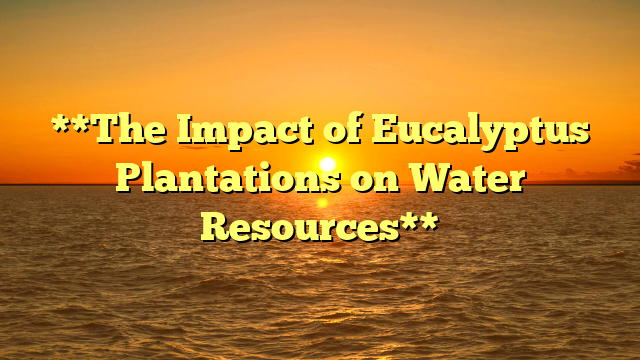
slot pulsa have become increasingly popular across the globe due to their rapid growth and economic benefits. These plantations, particularly in regions with water scarcity, have sparked a heated debate regarding their potential impacts on local water resources. While eucalyptus trees offer numerous advantages, including timber, oil, and medicinal uses, concerns have arisen over their ability to influence water availability in surrounding ecosystems. This article explores the various ways in which eucalyptus plantations can impact water resources, both positively and negatively.
**Water Consumption of Eucalyptus Trees**
Eucalyptus species are known for their high water consumption, particularly in tropical and subtropical climates where they are frequently planted. One of the primary concerns is the rate at which these trees extract water from the soil. Eucalyptus trees have deep root systems that enable them to access groundwater, a resource that is otherwise unavailable to many native plants. This ability to draw water from lower soil layers has the potential to reduce the water table levels, especially in areas where groundwater is already limited.
The high water usage of eucalyptus trees can be particularly problematic in semi-arid regions or areas that are already facing water scarcity. In countries such as Australia, South Africa, and parts of South America, eucalyptus plantations have been associated with the depletion of local water resources. Studies have shown that the water consumption of eucalyptus trees can exceed the available water in certain areas, leading to a decrease in river flows, reduced soil moisture, and negative consequences for local vegetation and wildlife.
**Impact on Streamflow and River Systems**
Eucalyptus plantations can significantly affect the hydrological cycle, particularly streamflow in nearby rivers and streams. These trees are known to increase evaporation rates, particularly in hot climates where the trees release moisture into the atmosphere. This increased evaporation can lead to a reduction in the amount of water that eventually reaches rivers and streams, resulting in lower streamflow during dry seasons.
Moreover, the dense canopy of eucalyptus trees can also alter rainfall patterns. By increasing transpiration and interception, eucalyptus trees can reduce the amount of water that reaches the ground, further impacting streamflow and groundwater recharge. In some cases, this has led to the drying up of small rivers and streams, affecting local communities and ecosystems that rely on these water sources.
**Mitigating the Negative Impacts**
While the water consumption of eucalyptus plantations is a valid concern, it is possible to mitigate their negative impacts on water resources. Proper management practices, such as selecting suitable eucalyptus species and planting them in areas where water availability is not a limiting factor, can help reduce their water consumption. Additionally, the establishment of buffer zones, reforestation efforts, and the use of agroforestry practices can help ensure that eucalyptus plantations do not excessively deplete local water supplies.
Moreover, the implementation of sustainable water management policies and practices is essential in balancing the economic benefits of eucalyptus plantations with the preservation of water resources. Researchers and policymakers must carefully monitor water usage in areas with large-scale eucalyptus plantations to identify potential risks and take preventive measures to ensure the sustainability of water resources.
Eucalyptus plantations have a significant impact on local water resources, with both positive and negative effects depending on how they are managed. While these trees can be a valuable resource for timber and other products, their high water consumption can deplete local water supplies, reduce streamflow, and disrupt ecosystems. By adopting sustainable forestry practices and carefully considering the water availability in planting areas, it is possible to minimize these adverse effects and create a more balanced approach to eucalyptus cultivation that benefits both people and the environment.





